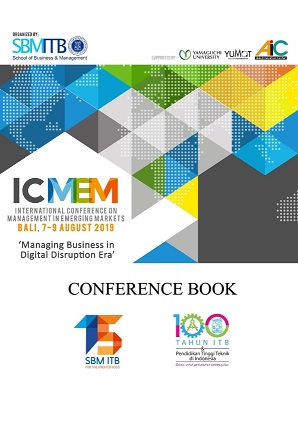Factors Influencing the Consumer Adoption of Mobile QR Code Payments in Indonesian University Students
Abstract
Abstract . Financial Technology (Fintech) was known to disrupt the financial sector. Fintech ecosystem were mapped by fintechnews.sg (2018) by 9 categories, and payment technology had the biggest distribution with mobile phone as part of this technology. Hootsuite (2019) stated that 60% of Indonesian adult population used smartphone, which explained the rapid growth of smartphone. With common technology of mobile phone camera, QR Code Payment arisen as a prominent mobile payment method. 1005 Indonesian University Students were made as respondents, considering that Ameme (2015)’s explanation that younger people’s technology adoption was bigger than the older ones. This research was purposed to examine the digital savviness of Indonesian University Students, using ratings of six group of activities that considered to be a basic necessities, based on Maslow (1943) and Deci and Ryan (2000). It was known that respondents had average index of “3.02”, and differences of index average happened on groups of sex and monthly income. In addition, current QR code payment adoption were analysed, where 78.91% respondents adopted QR Code Payment, mostly used Go – Pay and most of adopters had purchased food and beverage. Average digital lifestyle index were homogeneous among adopters and non – adopters. In addition, adoption factors were also analysed with UTAUT model, where several factors were known to had a significant influence toward the intention to adopt QR Code Payment, which were Cost (negative), Performance Expectancy (positive), Effort Expectancy (positive) and Social Influence (positive). Involvement was known to played moderation role on PE and SI’s impact toward the intention to adopt.
Keywords: UTAUT, QR Code Payment, Cost, Digital Lifestyle Index, Indonesia, University Students


